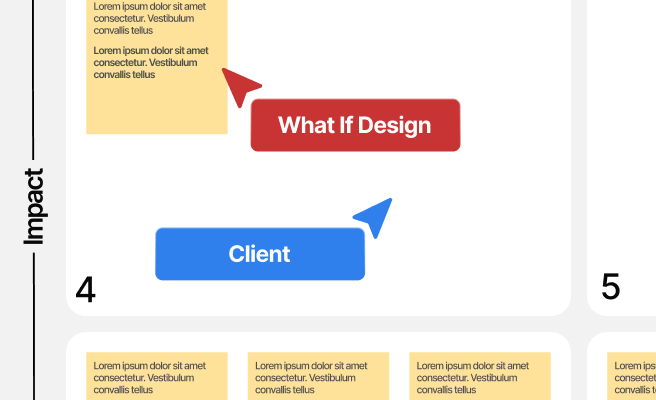Scenario Mapping
<p>Scenario mapping is a collaborative technique used in UX design to capture and communicate user scenarios. It involves creating visual representations of user interactions and experiences within a specific context, helping designers understand user journeys, identify pain points, and design solutions that address user needs. This method is crucial for ensuring that digital products, especially in climate tech, are both intuitive and effective in meeting user expectations.</p>
<p>Historically, scenario mapping has been a go-to strategy for designers aiming to anticipate user interactions and ensure that prototypes are developed with a comprehensive understanding of possible user journeys. It has evolved significantly, incorporating modern tools and methodologies to improve its effectiveness and adaptability.</p>
<h2>Importance of Scenario Mapping in Product Design</h2>
<p>Scenario mapping is not just about visualizing user journeys; it's about planning for every possible interaction a user might have with a product. This approach helps design teams anticipate risks, explore opportunities, and make informed decisions. By mapping out different scenarios, teams can better understand how various choices lead to different outcomes, allowing for more strategic planning and design.</p>
<h3>Components and Types of Scenario Mapping</h3>
<p>Scenario mapping typically involves several key components:</p>
<ul>
<li><b>User Personas:</b> Detailed profiles of typical users, including their goals, motivations, and pain points.</li>
<li><b>Scenarios:</b> Narratives or stories that describe how these personas interact with the product within a specific context.</li>
<li><b>Touchpoints:</b> Specific moments where the user interacts with the product.</li>
<li><b>Questions and Assumptions:</b> Queries and hypotheses related to user actions and interactions.</li>
</ul>
<p>Common types of scenario mapping include:</p>
<ul>
<li><b>Current-State Mapping:</b> Visualizes existing user interactions to identify pain points and areas for improvement.</li>
<li><b>Future-State Mapping:</b> Envisions ideal user interactions to guide the design of new features or products.</li>
</ul>
<h3>Practical Applications and Actionable Steps</h3>
<p>Scenario mapping is highly practical, offering several actionable steps for design teams:</p>
<ul>
<li>Start by gathering a diverse group of team members to ensure multiple perspectives.</li>
<li>Define clear user personas and create detailed scenarios that capture their journeys.</li>
<li>Use tools like post-it notes, brown paper, and colored markers to visualize scenarios. Digital tools such as <a href="https://miro.com/templates/scenario-mapping/" style="color:#2896FF; text-decoration:underline;">Miro</a> and <a href="https://slatebox.com/templates/scenario-mapping" style="color:#2896FF; text-decoration:underline;">Slatebox</a> can also be helpful.</li>
<li>Identify and document touchpoints, questions, and assumptions.</li>
<li>Review and iterate on the scenario maps regularly to refine your understanding and improve design solutions.</li>
</ul>
<h3>Challenges in Scenario Mapping</h3>
<p>While scenario mapping is a valuable tool, it comes with its own set of challenges. One common issue is ensuring that all relevant scenarios are covered. This requires thorough research and continuous iteration. Additionally, teams may struggle with aligning different perspectives and priorities, which can be mitigated by involving a diverse group of stakeholders in the mapping process.</p>
<h2>Conclusion</h2>
<p>Scenario mapping is an indispensable technique in UX design, offering a structured approach to understanding and improving user interactions. By visualizing user journeys and anticipating various outcomes, design teams can create more intuitive and effective digital products. For those in the climate tech sector, scenario mapping can be particularly beneficial in addressing unique user needs and ensuring that products contribute positively to environmental goals. To learn more about improving your scenario mapping strategies, consider exploring resources like the <a href="https://www.nngroup.com/articles/scenario-mapping-personas/" style="color:#2896FF; text-decoration:underline;">Nielsen Norman Group</a> and <a href="https://www.uxforthemasses.com/scenario-mapping/" style="color:#2896FF; text-decoration:underline;">UX for the Masses</a>.</p> <p>Increase user engagement that converts your demos into sales. Optimise your UX strategies with our audits.
<p>Fill out the <a href="https://tally.so/r/n97pxQ" style="color:#2896FF; text-decoration:underline;">UX Audit form</a> to get started. Ready to discuss your needs? <a href="https://cal.com/akhilak/what-if-design?duration=25" style="color:#2896FF; text-decoration:underline;">Book a consultation call</a> with us today.</p></p>

Let's scale your impact with great design.
Free consultation, no sales pitch
Thank you! Your submission has been received!
Oops! Something went wrong while submitting the form.
Let’s talk
Nothing great is built alone.
Let’s connect about your vision, our work and how we can collaborate.
Get in touch

